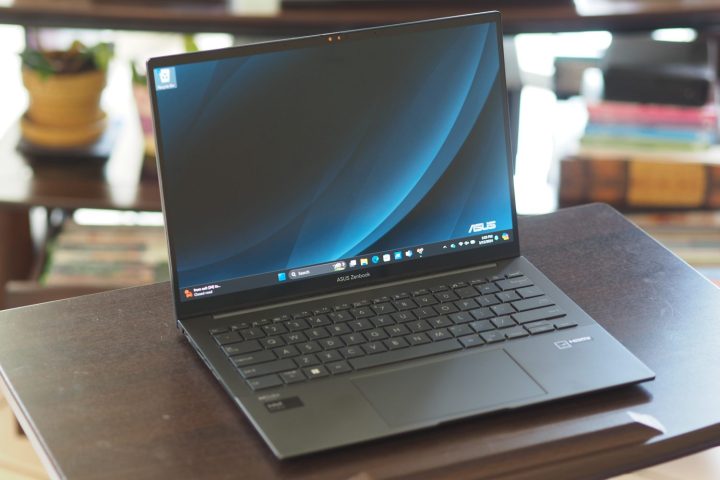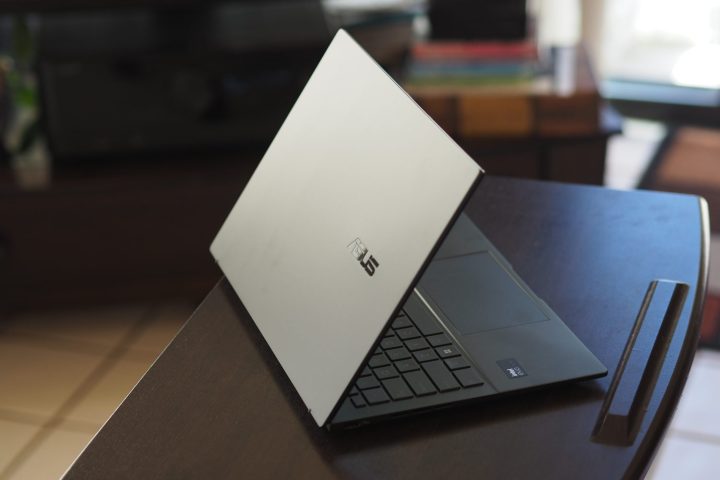
I see you. You’re considering a flashy new MacBook Air — perhaps one of the new M3 models or even the cheaper M2 configurations. I’m not going to sit here and pretend like that isn’t a wise option to consider for your next laptop. These are excellent laptops, and that M2 model in particular is a solid value at a starting price of $999.
But let me make an appeal to you about a laptop that upends the value proposition of the MacBook Air in a number of ways. The laptop I’m talking about is the Asus Zenbook 14 OLED (Q425MA). This is a laptop we reviewed earlier this year, but it continues to be the king of value. No other laptop you can buy right now offers this much bang for your buck — the MacBook Air included.

Even more astounding, you can currently buy it at Best Buy starting at $599. That’s a mind-boggling deal. It comes with 8GB of RAM, 512GB of storage, and the latest Intel Core Ultra 5 processor. You still get the OLED screen too.
That screen is important to point out because it represents a real upgrade over what you get on the MacBook Air. Despite being significantly less expensive, the Zenbook 14 has a better screen in almost every way. OLED offers the deep blacks and incredible contrast the technology is known for, as well as fantastic color reproduction and accuracy. It may not be quite as bright as the MacBook Air, but the upgrades in contrast and color more than make up for it.
In other words, it’s not the budget laptop of yesteryear. In the past few years, laptops that at this price had major compromises, whether that was in the screen, build quality, or performance. Not so with the Zenbook 14 OLED. Apart from the specs, it even has the quality-of-life goodies you’d want, including a fantastic keyboard, a 1080p webcam, and plenty of ports. Having USB-A and HDMI 2.1 is still super handy — and these are two ports you won’t find on the MacBook Air.

Now, I get it. This isn’t the prettiest laptop in the world. The Asus logo on the lid is a bit old school, which is a detriment to the overall design. Asus does offer a spruced-up version (the Zenbook 14 OLED UX3405) that has a more interesting lid design, though there’s only a higher-end configuration offered with 32GB of RAM — so it’s rather expensive by comparison.
And while the Zenbook 14 OLED Q425 isn’t as modern as the MacBook Air, it’s nearly as compact. The screen is slightly larger, but at 2.7 pounds, it’s the exact same weight as the MacBook Air. The 0.59-inch thickness of the Zenbook is slightly thicker than that the 0.44-inch MacBook Air, but it’s not as big of a difference as you may think.
There is, however, one major compromise you’ll have to make when going with the Zenbook 14. It doesn’t get quite as good a battery life as the MacBook Air, which is still the champ in power efficiency. Even there, though, the Zenbook 14 is one of the better Windows laptops in terms of battery life that you can buy, lasting over 12 hours on a single charge in web browsing or up to 18 hours in local video playback. The MacBook Air is still 7 or 8 hours ahead in web-browsing battery life — which is crazy to think about — but suffice it to say that the Zenbook 14 is no slouch.
All that to say: If these two laptops priced exactly the same, I’d of course recommend buying the MacBook Air. There’s no doubt about that.
But at half the price when similarly configured, you just can’t beat the Zenbook 14 OLED in terms of value. If you’re saving up for the MacBook Air, especially given its fairly low price, I highly recommend considering the Zenbook 14 OLED first.
Editors' Recommendations
- These 6 tweaks take MacBooks from great to nearly perfect
- 5 laptops you should buy instead of the M2 MacBook Air
- I’m worried about the MacBook’s next big rival
- Why you should buy a MacBook Pro instead of a MacBook Air
- Which color MacBook should you buy? Here’s how to pick


